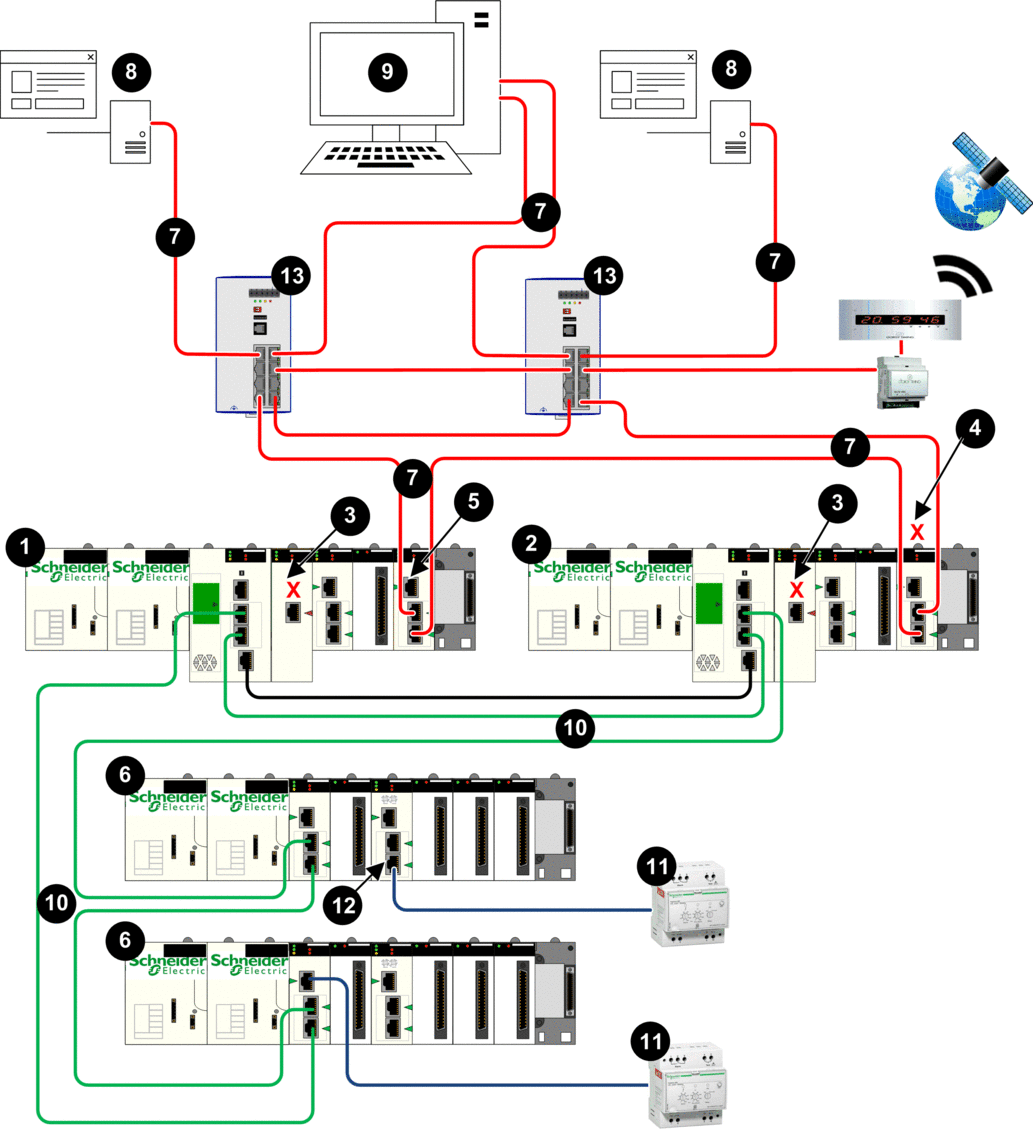Architecture

1 Primary Hot Standby PAC
2 Standby Hot Standby PAC
3 BMENUA0100 with control port disabled
4 BMENOS0300 or BMENOC0301/11 with backplane port disabled
5 BMENOS0300 or BMENOC0301/11 with backplane port enabled
6 X80 Ethernet RIO drop
7 Control network
8 OPC UA client (SCADA system)
9 Engineering workstation with dual Ethernet connections
10 Ethernet RIO main ring
11 Distributed equipment
12 BMENOS0300 switch
13 Dual ring switch (DRS)
Description
This architecture provides high availability with redundant connections linking redundant OPC UA clients (SCADA systems) to redundant Hot Standby PACs in a single subnet.
Each PAC is connected to SCADA via either a BMENOS0300 or BMENOC0301/11 module. To guard against the unintended creation of Ethernet loops, the backplane port of one of the BMENOS0300 or BMENOC0301/11 module is disabled. In this example, it is the module in the standby PAC (4) with a disabled backplane port. Additionally, RSTP redundancy protocol is used to assign roles to each port to avoid logical Ethernet loops.
The BMENUA0100 control port is disabled (3) for each standalone PAC. IPv4 Ethernet communication to the BMENUA0100 module is provided over the backplane port.
Downstream connectivity to the X80 Ethernet RIO drops is provided by the CPU device network ports. Further downstream connectivity from the X80 Ethernet RIO drops is provided by both the CRA service port and a BMENOS0300 switch (12) to distributed Ethernet equipment.
In this flat network design, all network devices – including each Hot Standby CPU and BMENUA0100 module – are NTP clients of an NTP server that resides in the control network. As a result, the CPU time and the BMENUA0100 module time are synchronized.
The BMENUA0100 supports applicative time stamping. In this process, time stamping modules record events in their local buffer. These time stamped events are consumed by the application running in the PAC, which converts the raw record data and stores it in a usable format. The formatted records can then be consumed by a supervisory application, such as a SCADA system.


